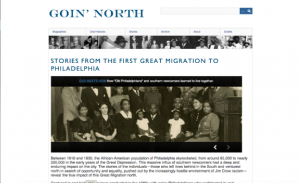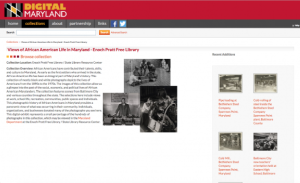General Interest
Back to Top
|
 |
|
The Power of Propaganda in World War II
|
Social studies |
|
From PBS Learning Media comes this interactive, standards-aligned lesson focused on propaganda in World War II. Designed for students in grades 8-12, this digital lesson requires students to use primary sources and media to "examine how and why propaganda was used by combatant nations with such powerful effect during World War II." Over the course of thirteen sections the lesson uses examples of artifacts, documents, and video footage from the US, the UK, Germany, Japan, and the Soviet Union to "[invite] students to explore history through the experiences of ordinary people and gain important skills in media literacy that they can apply in the present day." Students can annotate and highlight directly in the text of the lesson, and exercises to encourage critical thinking are incorporated throughout the lesson. The final assignment asks students to evaluate the risks and benefits of propaganda and can be completed in written, oral, or multimedia format. Teaching tips for educators are included and anyone can access this lesson by creating a free account. While this resource is designed for student use, its interactive approach may appeal to lifelong learners as well. This lesson was produced by the WGBH Educational Foundation in partnership with the International Museum of World War II. [JDC] |
|





|
|
 |
|
 |
|
Socratica
|
Educational Technology |
|
For those who enjoy learning through videos, the YouTube channel Socratica creates free video courses on a variety of subjects with particular strength in STEM topics. Here, visitors will find well over one hundred concise, well-produced educational videos teaching diverse subjects that range from chemistry to Python tutorials to English grammar. Most videos are approximately five to ten minutes in length, but there are also several playlists that offer short glossaries featuring vocabulary for topics such as chemistry, art, and opera. Students in all disciplines may be interested in Socratica's series on study tips, where they offer advice on how to study effectively and efficiently. The videos on this channel are largely targeted for high school and college students, but anyone interested in their topics will find them valuable. Socratica also has a separate channel, Socratica Kids, where they publish videos intended for younger learners. Founded in 2013, Socratica is run by Kimberly Hatch Harrison, a professional educator with Masters in Molecular Biology from Princeton University, and Michael Harrison, a former software engineer with a Masters in Mathematics from the University of Washington. [JDC] |
|





|
|
 |
|
 |
|
International Journal of STEM Education
|
Science |
|
First published in 2014, the open-access International Journal of STEM Education describes itself as "a multidisciplinary journal in subject-content education that focuses on the study of teaching and learning in science, technology, engineering, and mathematics (STEM)." This peer-reviewed academic journal offers educators and readers with an interest in pedagogy an online platform for learning about and publishing interdisciplinary research "regarding, among other topics, the design and implementation of technology-rich learning environments, innovative pedagogies, and curricula in STEM education that promote successful learning in pre K-16 levels, including teacher education." Thus far there are several thematic collections of articles focused on topics, such as international research trends in STEM practices in education, the design of video-based professional development programs for STEM educators, and (most recently) the development of students' science identities, which centers around educational psychology constructs. The International Journal of STEM Education is published by SpringerOpen and indexed by a number of databases including Web of Science, ProQuest, EBSCO, and Google Scholar. Its editorial board hails from universities around the world, and its Editor-in-Chief is Yeping Li, Professor of Teaching, Learning, and Culture at Texas A&M University. [JDC] |
|





|
|














